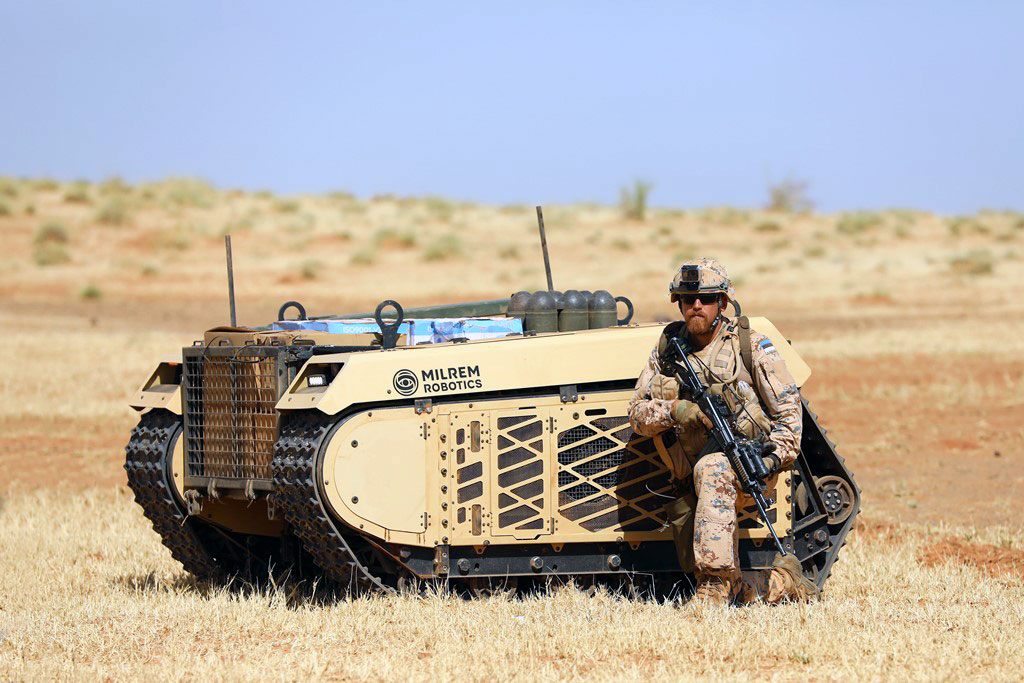The (allied) doctrine for amphibious operations used to be (remember, please, that I retired going on 25 years ago) that the Navy task force commander retained full command of the landing force until (s)he was satisfied that the land force commander was secure on the beach.
I think that makes sense in that situation.
I do not believe we should try to equate ships with aircraft and APCs or troop carling vehicles. I think the problems of managing the "transition" when one has a carrier until and a separate combat arms force is too complicated. I think the idea of carrier regiments has one and ONLY one advantage: it may be necessary when you have insufficient resources ~ rather like a four month delay between vaccine doses.
I think that it makes sense to regularly co-operating forces in co-operation. It makes sense to collocate different units that will work together in close cooperation in the field to reduce the administrative burden of having them work jointly. Post marines on ships. Collocate gunners, engineers and infanteers, helicopters and gunners and engineers and infanteers, and yes tanks and close combat vehicles and gunners and engineers and infanteers.
Familiarity breeds more than contempt. Conversely, isolation is a sterile concept.
WRT the Light Armoured Vehicle as an Infantry Fighting Vehicle and further to the definition supplied by MarkPPCLI -
"The term “armoured infantry fighting vehicle” means an armoured combat vehicle which is designed and equipped primarily to transport a combat infantry squad, which normally provides the capability for the troops to deliver fire from inside the vehicle under armoured protection, and which is
armed with an integral or organic cannon of at least 20 millimetres calibre and sometimes an antitank missile launcher."
The key element is the highlighted one. The difference between the M113 and the LAV is the M113 mounted the Platoon's weapons while the Platoon was in transit. The Platoon dismounted the weapons for the fight. The Battle Taxi fell in behind the lines to exfiltrate the Platoon when required. The Platoon fought on the ground.
The LAV, with its integral weapons, is not capable of dismounting its primary weapons. To get the advantage of those weapons it is necessary to Fight the whole Vehicle. You can't dig in the Bushmaster. You have to dig in the entire LAV. Once the vehicle has an integral weapon it is automatically a Fighting Vehicle, even if it has no armour at all.
It is tempting to use the available vehicles to give the footsloggers a ride but the cost of giving the warm seats in the back is it makes the Fighting Vehicle a bigger target, less manoeuverable and thus less effective in its Fighting Role and it encourages keeping the infantry on board longer than they should be.
Those THeMIS UGVs present a better means of incorporating machine cannons and ATGMs into the infantry battalion in that they operate on the same scale as the infantry - similar size, similar speed, similar concealability, similar terrain.
If the Tanks need a companion vehicle with cannon and ATGMs then I think it would only be fair to those crews to give them the same armour and manoeuverability as the tanks. Otherwise they will be picked off by Recoilless Rifles, anti-tank guns and older model tanks, ATGMs and drones while the "Modern" tanks battle it out.
If they were carrying GIBs not only do they become larger targets, the armour becomes thinner and the GIBs.... don't do well at all.
It is true that our citizenry is parsimonious when it comes to defence. We both know it was ever thus. It is unlikely to change, especially if war becomes the common rather than the extraordinary. So needs must.
The one thing it is clear that Canadians value more than their treasure is the blood of the children.
That means that an infantry-centric force is less likely to be used than a technology-centric force.
That means that infanteers will have less value politically even when they are tactically critical. We will have to hang on to those volunteers we get and make them as flexible as possible. By all means, train the infanteers to work with the LAVs, even post the LAVs and the infanteers to the same battalion. But I believe that those infanteers should also be trained to debus from helicopters. And light infanteers should equally be trained to co-operate with LAVs.
If not a Carrier Regiment per Brigade then at least a Light Armoured Fighting Vehicle Company per Medium Battalion.





